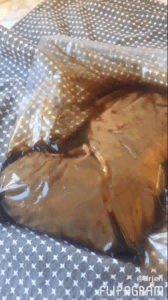 It’s one thing to eat meat, it’s another thing entirely to eat ‘organ’ meat. We get it.
It’s one thing to eat meat, it’s another thing entirely to eat ‘organ’ meat. We get it.
Rather than exploring all organ meats, let’s limit this blog to liver and the health benefits it provides. I’m not normally a fan of liver in meals due to frightening childhood experiences but I’ve been experimenting with liver the last few months and not once have my boys curled their top lip or noticed anything different. I often ask them what ingredients they think a meal contains and typically they are shocked when I reveal that a meal has included liver.
I’ve been adding bone broth to meals for years but I think the trick with liver is to cut it into inch size pieces, blend up just one of these and simply add the puree (or paste) to some standard family meals. BINGO – bulk nutrition and nobody’s taste buds are offended. We freeze the remaining liver pieces in freezer bags (roughly about 10 for a beef liver, less if it’s duck, lamb or chicken). Or, as Trilby prefers, blend the liver in advance and then freeze it in ice cube trays.
Why liver?
Many of our grandparents will remember the days when liver was served once a week.
But then nutritional advice suggested discontinuing this healthful practice to avoid cholesterol. This advice has since been rebutted. Others stopped eating liver fearing exposure to toxic substances. While it is true that one of the liver’s functions is to act as a filter for toxins, it is not a storage place for them. If there are too many toxins for the bowel to process, they generally accumulate in the fatty tissues and nervous system of the animal. I discuss this more later in this blog.
Let’s explore why liver might need to be your new BF.
- Gram for gram, liver is one of the most nutrient dense foods available to us. Many health experts now go as far as to say liver is indeed a superfood and should be eaten at least once a week.
- The reason why liver is one of the best superfoods and healing foods today is that it’s one of the best sources of B vitamins, and vitamins A, D, E, K and minerals such as copper, iron, chromium, phosphorous and selenium, as well as the powerful antioxidant CoQ10.
- Liver has been used extensively by doctors of natural medicine for years.
- If you struggle with low energy, fatigue or neurological issues, liver is something to add into your diet.
- Key nutrients in liver help keep our brains healthy. These include the essential fatty acids EPA, DHA and AA, as well as vitamin B12. Many disorders of the nervous system result from vitamin B12 deficiency, including brain fog, panic attacks, weakness, loss of balance, numbness and depression.
- Vitamin B12 benefits red blood cell formation and improves cellular function. Vitamin B12 is only well absorbed from animal sources, with liver being the most concentrated source. Other foods with B12 include sardines, mackerel, herring, salmon, haddock, halibut, scallops, lamb, beef, chicken, eggs, milk, cottage cheese, Swiss cheese and blue cheese.
- In addition to vitamin B12, liver is high in vitamin B6, biotin and folate. Those B vitamins, especially folate, help your body with methylation as well as cellular function.
- Liver is a good source of purines, which are nitrogen-containing compounds that serve as precursors for DNA and RNA.
- With all these minerals, liver supports your body’s detoxification pathways, and consuming liver actually HELPS your liver to function better. In fact, consuming liver is an effective liver cleanse; it gives your body and your liver all the nutrients you need to detoxify properly. This is the number one reason that I love liver as it’s easy to lose sight of just how many toxins we are exposed to with modern living and by consuming liver we support detoxification naturally!
- Liver also is packed with iron. If you struggle with anaemia, liver is probably the best food to consume because it contains folate, iron and vitamin B12. These are the three vitamins and minerals you need in order to overcome anaemia naturally.
- It also contains balanced quantities of vitamin A which is an important catalyst for many biochemical processes in the body and is absolutely essential for nutrient assimilation, bone development and fertility.
 Many experts believe that modern diets have left people largely deficient in vitamin A, contributing to poor vision and weak immune systems. As with anything, too much of a good thing can cause harm, particularly if you’re using high doses of synthetic or supplement forms of vitamin A. It is important to consume vitamin A from whole foods like liver, which have a balanced nutrient profile and are safe, prepared as nature intended.
Many experts believe that modern diets have left people largely deficient in vitamin A, contributing to poor vision and weak immune systems. As with anything, too much of a good thing can cause harm, particularly if you’re using high doses of synthetic or supplement forms of vitamin A. It is important to consume vitamin A from whole foods like liver, which have a balanced nutrient profile and are safe, prepared as nature intended.
Contrary to the popular misconception, the beta-carotene found in greens and other plants is not actually vitamin A — it is a precursor of vitamin A. That is, it gets converted to vitamin A in our bodies. Some studies suggest that beta-carotene is absorbed (converted) quite inefficiently, at rates of 3–50%, depending on an individual’s dietary and non-dietary factors. Active vitamin A (that can be readily absorbed by the body) is only found in foods of animal origin.
- If you are pregnant and are concerned about consuming excess vitamin A through eating liver, then simply refrain from eating it.
- If you cannot bring yourself to consume liver then raw desiccated liver from organic cows is a great alternative. Taken in the form of desiccated liver capsules this provides the easiest and most convenient option. Added to soups, gravies, stews, smoothies or broths, desiccated liver powder is a great way to introduce liver into the diets of those who don’t care for the taste and texture of liver!
A small 85g serving of braised liver provides:
- all the Daily Value for vitamin A;
- riboflavin, copper and vitamin B12;
- the best food source for practically all the B vitamins;
- 93% of the Daily Value for selenium, a valuable trace mineral that is one of the most truly powerful cancer-fighting nutrients on the planet;
- half of the Daily Value for zinc, niacin and folate (which is usually associated with vegetables and fortified foods);
- about one third of the Daily Value for iron;
- and, for goodness’ sake, it even has some vitamin C which is great for iron absorption!
But aren’t livers full of toxins?
While it is true that one of the liver’s functions is to act as a filter for toxins, it is not a storage place for them. If there are too many toxins for the bowel to process, they generally accumulate in the fatty tissues and nervous system of the animal.
All foods potentially contain some level of toxins, and animal produce potentially contains more than plant foods depending on how they are grown. The liver will only store toxins if it is sluggish or overwhelmed, such as in sick or conventionally raised animals raised in confinement. The health of the animal obviously affects the heath of its organs.
For this reason, just as with any meat, when you buy liver it’s important that you get it from animals that are organic or grass-fed, free-range and pasture-raised. When sourced from healthy, grass fed cows, liver is absolutely loaded with a wide spectrum of vitamins, minerals, proteins and fats that outweigh any small amount of toxins it may contain.
As an added safety measure some authors suggest that liver recipes are greatly improved if the liver slices are first soaked in lemon juice for several hours. This may help to draw out impurities and gives a nicer texture.
 How can I give liver to my kids?
How can I give liver to my kids?
The easiest way to give liver to children is, as we previously outlined, by blending small portions of pureed organic liver and mixing it with other ingredients that you are cooking when making meals. A small portion of pureed liver is well disguised in meals such as spaghetti bolognaise, lasagne, shepherd’s pie and hearty casseroles — meals that have a strong flavour on their own. I also add a small portion to soups that contain a protein base — lamb and vegetable soup or chicken and vegetable soup.
If I have spare beef liver, I sauté it well and cover it with loads of garlic, onions, butter and a little bit of flour, I then blend it up in my thermos-mix and serve it on top of a steak as a gravy.
Another favourite way to consume liver is pâté. Chicken liver pâté is delicious and many kids devour it, particularly when their bodies are craving this nutrition. Pâté is also a very easy recipe to make at home and kids feel super sophisticated when they get to join adults in eating a platter of cheese and pâté.
I share my recipe for pâté in the SNACKS section of RECIPES in this App. Beef liver doesn’t taste as good as chicken, duck or calf liver when making pâté. Sometimes I still make pâté with beef liver, but duck or chicken are my preference. We have included recipes for both.
Liver is a great food for those needing to build or re-build health, for children, weary adults and pregnant and postpartum women. Liver provides the raw materials we need to boost the health and resiliency of our own liver — something that many of us need with the onslaught of toxic chemicals in the environment and the prevalence of digestive issues. It’s a go-to food for those wanting to be healthy and robust.
For further information please see our related blogs:
LIVER: What to do with this beasty beast?
Posh Pâté Snacks
Dairy Free Pate. Get in my body already!
Resources:
Kristina L Penniston and Sherry A Tanumihardjo. The acute and chronic toxic effects of vitamin A1,2,3,4 From the Department of Nutritional Sciences, University of Wisconsin–Madison, Madison, WI https://ajcn.nutrition





